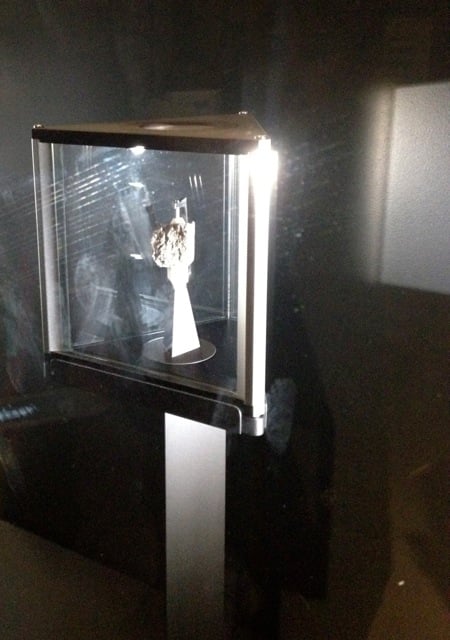We are pleased to welcome our guest blogger, Edinburgh based artist and writer, Catherine Marshall.
Catherine’s work explores the boundary between the banal and the absurd through subjecting the rhythms, the routines and the structures of everyday life to an intense and detailed scrutiny. She is interested in different articulations of structure and form, both in relation to the built environment, as well as to visual and written language.
Here she recounts how a spontaneous game of table tennis with her son, in a closed-off space at Summerhall in Edinburgh turned into an impromptu performance, which was subsequently re-lived on a repeat visit a few weeks later.
For more on her work, please visit: http://compartmentsee.blogspot.co.uk/
In a dusty room, in the basement corridor of Summerhall in Edinburgh, my son and I are playing a game of table tennis. Ten minutes before, I had been cajoling him to come to the centre at all, as he didn't want to see 'art you like' which, he said, was 'boring'. But here we are now engrossed in a game, not even sure if we were supposed to be using this room at all.
By all accounts, it was a storage space: empty plinths, stacked chairs covered with dust, a glass of red wine abandoned on the floor. We had paused and peered into the darkness of the room, seen the table tennis table and cheekily flicked on the switch, bathing the room in fluorescent light. Accompanied by Donna Summer on an infernal loop blasting from a film installation next door, our performance had begun. Members of the public walked past, peered in for an instant, then moved on. All that we lacked was a title for our show.
Nothing happened much in our performance, my son's school uniform got covered in dust as he wriggled under the chairs to retrieve a ping-pong ball. No, nothing really happened, just a victory on both sides and a lot of fun. No lasting impressions from our under-the-radar performance then, just a permanent synesthetic association between table tennis and Donna Summer for the performers themselves.
After this discovery, it was not hard anymore to persuade my son to come to the arts centre.
When we returned at a later date for a rematch, we found the room had been cleared. But just beyond the corridor in an exhibition space there was, luckily for us, a new table tennis table. This time it was not near collapse like the other one, but brand new and covered with an intriguing laminated design. Three brand new bats sat in their holder and there was a bowl full of new ping-pong balls.
This table tennis table, however, formed the basis of a sound piece, and it had a title, Noisy Table, a collaboration between artist Will Nash and the Build Brighton Hack Space. When the ball hits the table the vibrations creates sounds that are broadcast back into the game. In one of its soundscapes, the ball's touch on the table filled the room with words spoken by Ivor Cutler: 'Creamy Pumpkins', 'Kiss', 'How do I get out of here?' My younger son aged 4, not yet old enough to play, but able to operate the buttons switching soundscapes, was heaped over the corner of the table in fits of giggles, connecting as children naturally do, with the absurd.
The artist has said of the piece: 'People can feel intimidated when they are asked to join in by an artist but they don't even think about that with table tennis. They just pick up the bat and start playing'.
When it was first exhibited, the ping-pong table simply exhibited the sound of the ping-pong hitting the table, a nice idea in itself. Now it has apparently endless possibilities as it can work with open patch software for customisation.
May I suggest for its next incarnation, a soundscape of top volume disco hits of Donna Summer, filtered through a dusty room and an eight-year old boy shouting, 'best out of 10, no 11, no 12!' 'Just one more game!' and 'Stop taking pictures Mum, just play!'
Read More


